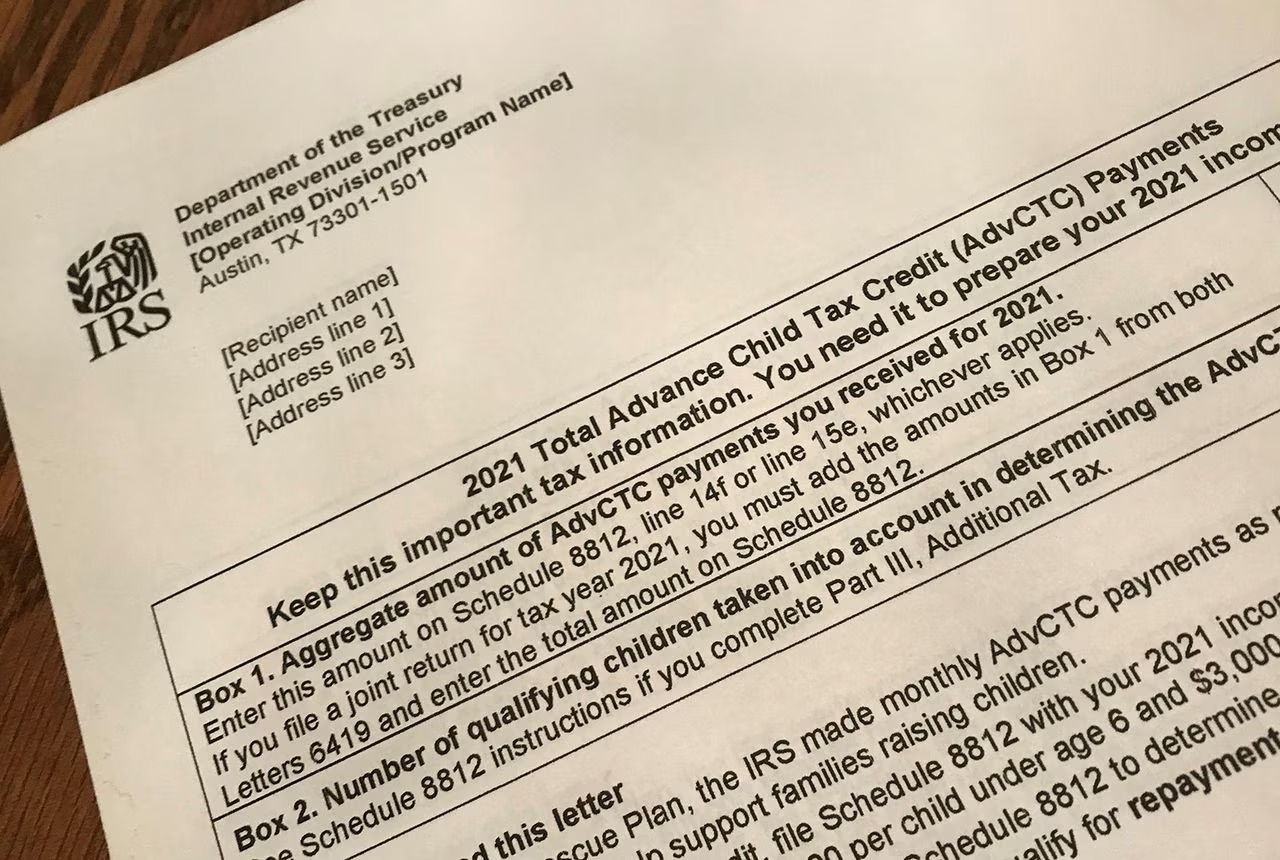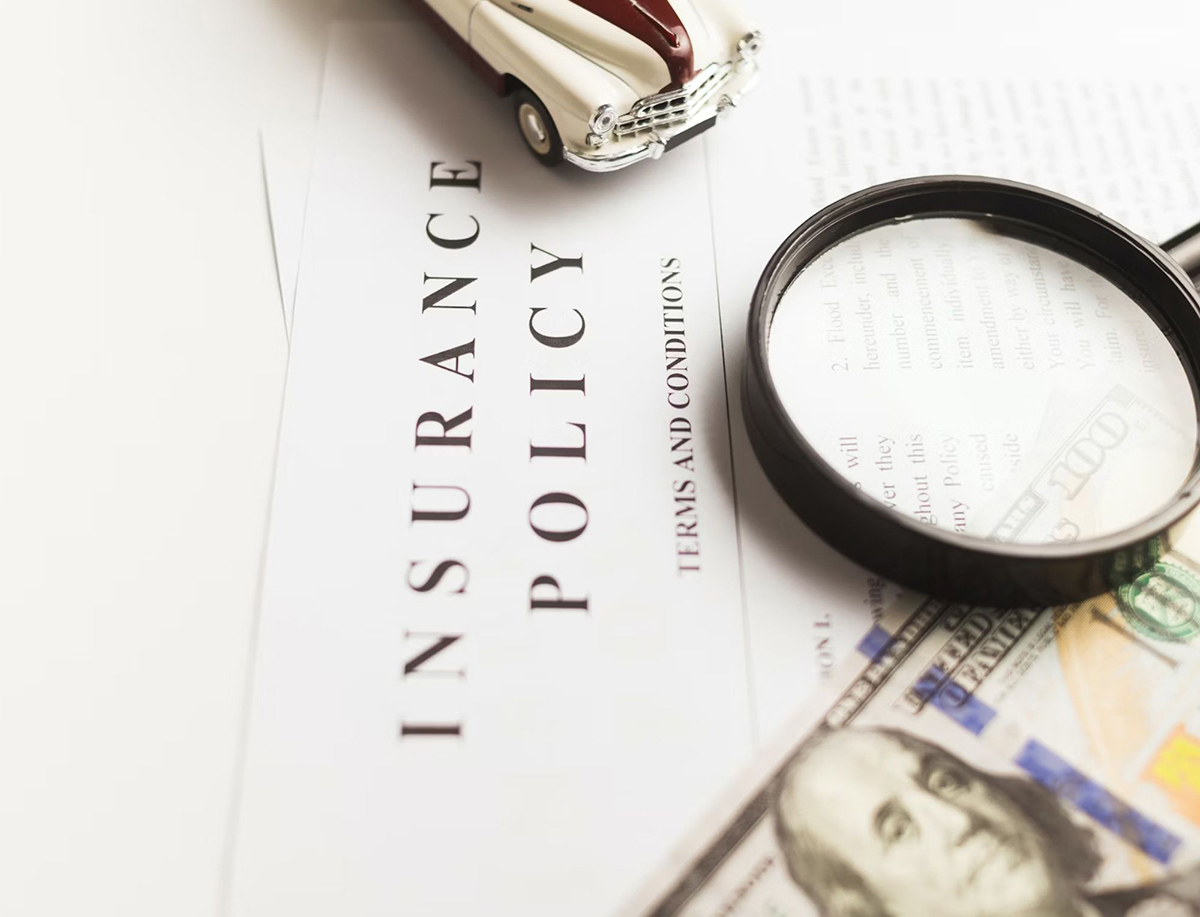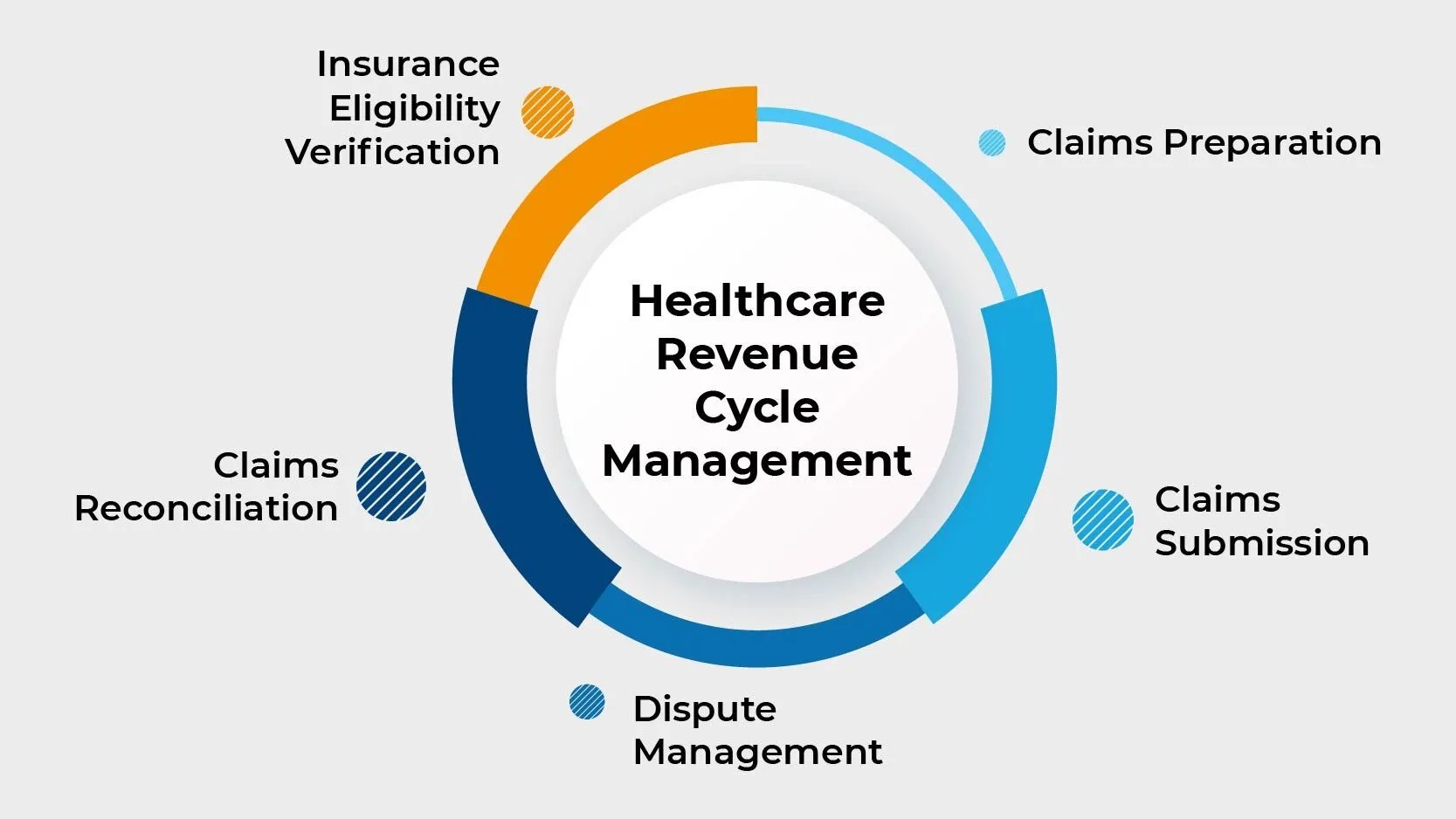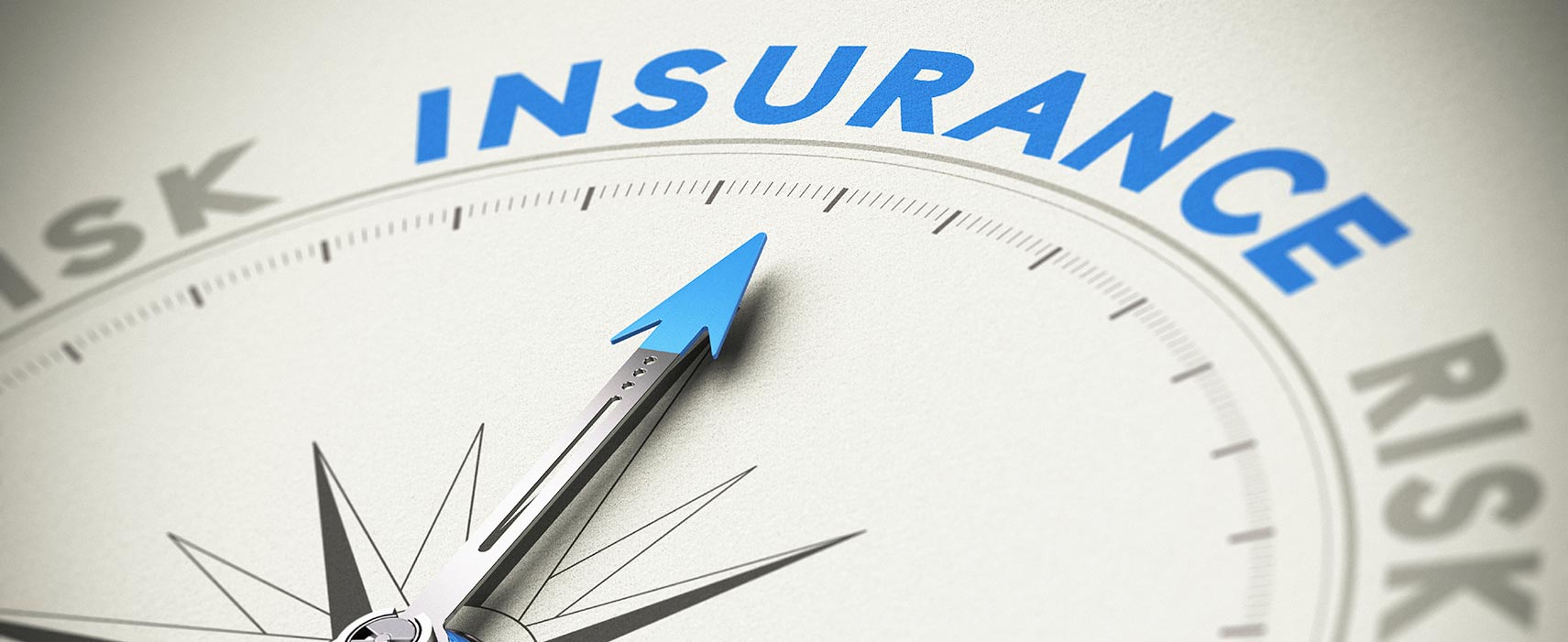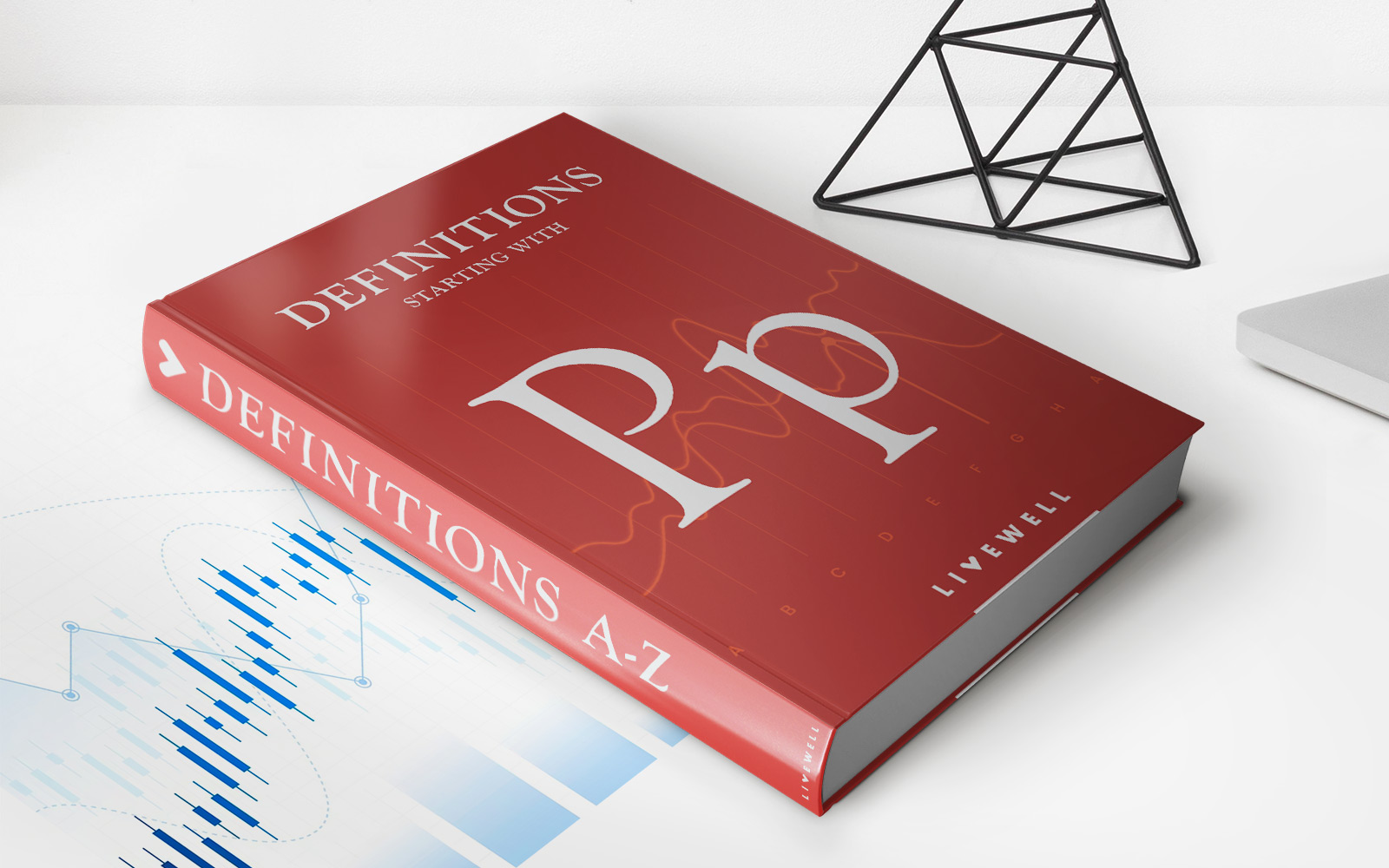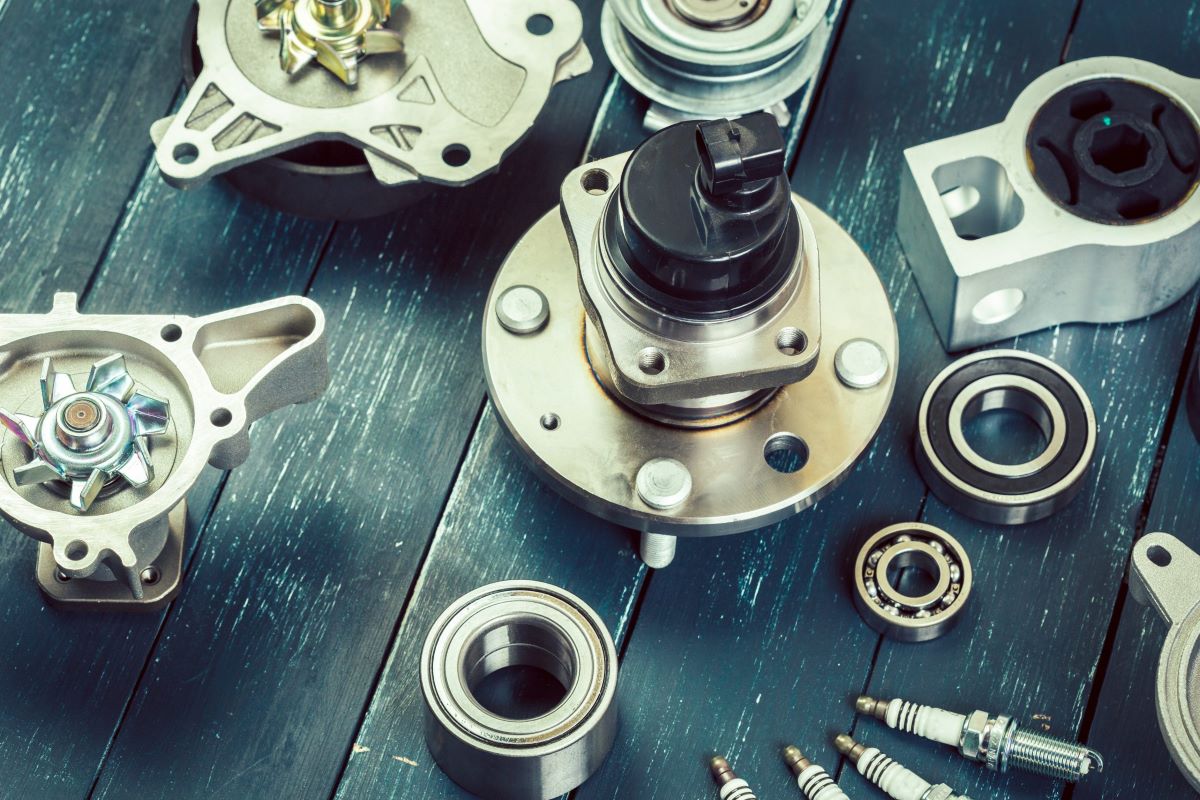

Finance
How To Get OEM Parts From Insurance?
Published: November 15, 2023
Learn how to get OEM parts from insurance for your vehicle finance. Ensure your car is repaired with genuine parts for optimal performance and safety.
(Many of the links in this article redirect to a specific reviewed product. Your purchase of these products through affiliate links helps to generate commission for LiveWell, at no extra cost. Learn more)
Table of Contents
Introduction
When it comes to getting your vehicle repaired after an accident, one of the most important considerations is the quality of the parts used. Original Equipment Manufacturer (OEM) parts are designed and manufactured by the same company that made your vehicle, ensuring the highest level of compatibility and performance. However, getting OEM parts from your insurance company can sometimes be a challenge.
In this article, we will explore the process of obtaining OEM parts from your insurance provider. We will discuss the benefits of choosing OEM parts, the coverage provided by insurance companies, and the steps you can take to ensure you receive OEM parts for your vehicle repairs.
Understanding the importance of OEM parts is crucial in making an informed decision about your car repair. When your vehicle is repaired with OEM parts, you can rest assured that they have been specifically designed and tested for your make and model. This means they will fit correctly and function as intended, maintaining the safety and performance of your vehicle.
Insurance companies often prefer to use aftermarket parts to repair vehicles due to their lower cost. Aftermarket parts are made by third-party manufacturers and may not meet the same quality standards as OEM parts. However, insurance policies vary in terms of their coverage for OEM parts, and it’s important to understand your specific policy and options.
If you prefer to have OEM parts used in the repair of your vehicle, you may need to be proactive in communicating your preference to your insurance provider. This can involve contacting your insurance company, making a claim for OEM parts, providing proof of the need for OEM parts, and potentially negotiating with your insurance company to ensure you receive the coverage you desire.
In some cases, your insurance company may refer you to an OEM parts supplier who can provide the necessary parts for your repairs. Working directly with an OEM parts supplier can streamline the process and help ensure you receive genuine parts that meet the original specifications of your vehicle.
In the following sections, we will delve into each of these topics, providing you with the necessary information and guidance to navigate the process of obtaining OEM parts from your insurance provider.
Understanding OEM Parts
Before diving into the process of obtaining OEM parts from your insurance provider, it’s important to have a clear understanding of what OEM parts are and why they are considered superior in quality compared to aftermarket parts.
Original Equipment Manufacturer (OEM) parts refer to the components that are designed and manufactured by the same company that produced your vehicle. These parts are specifically engineered to fit and function seamlessly with your car, ensuring optimal performance and safety.
One of the key advantages of OEM parts is their quality and reliability. Since they are made by the original manufacturer, they meet the same stringent standards as the parts that were originally installed in your vehicle. This guarantees that OEM parts offer the same level of compatibility, durability, and performance.
When using OEM parts, you can have peace of mind knowing that they have undergone extensive testing to ensure they meet or exceed the specifications set by the vehicle manufacturer. This ensures that the parts will function exactly as intended, maintaining the integrity of your vehicle and protecting its resale value.
In addition to their superior quality, OEM parts also provide a better fit compared to aftermarket alternatives. Since they are designed specifically for your make and model, they are guaranteed to match the exact dimensions and specifications of the original parts. This precise fit ensures that the repaired vehicle looks and feels like it did before the accident.
Furthermore, choosing OEM parts for your car repairs can also have an impact on warranty coverage. If your vehicle is still under warranty, using OEM parts is typically required to maintain the warranty’s validity. Using aftermarket parts may void the warranty, leaving you responsible for any future repairs that may be needed.
While aftermarket parts may be less expensive than OEM parts, their lower cost often comes at the expense of quality and fit. Aftermarket parts are made by third-party manufacturers who may not have access to the original design specifications or the same level of quality control as the original manufacturer. This can result in parts that do not fit correctly or do not perform as expected, compromising the safety and reliability of your vehicle.
Understanding the value and importance of OEM parts is essential when it comes to advocating for their use in the repair process. In the next section, we will explore the insurance coverage for OEM parts and how to ensure you receive them for your vehicle repairs.
Why Choose OEM Parts
When it comes to selecting parts for your vehicle repairs, opting for Original Equipment Manufacturer (OEM) parts offers numerous advantages over aftermarket alternatives. While aftermarket parts may seem more affordable, choosing OEM parts can provide you with peace of mind, quality assurance, and long-term benefits.
One of the primary reasons to choose OEM parts is their superior quality and compatibility. OEM parts are specifically designed and manufactured by the same company that built your vehicle. This means that they undergo rigorous testing and meet the original specifications, ensuring a perfect fit and seamless integration with your vehicle. The precise fit of OEM parts ensures that your repaired vehicle will maintain its original performance, safety features, and aesthetics.
Another important reason to choose OEM parts is their reliability and durability. As the original manufacturer-approved parts, they are engineered to endure the specific demands of your vehicle. OEM parts are made using high-quality materials and manufacturing processes, ensuring optimal functionality and longevity. This means that your repairs will be built to last, giving you confidence in the reliability and performance of your vehicle.
Using OEM parts in your vehicle repairs can also have potential warranty benefits. If your vehicle is still under warranty, using aftermarket parts may void the warranty, leaving you responsible for future repairs. On the other hand, opting for OEM parts ensures that your vehicle remains compliant with the manufacturer’s warranty requirements, protecting your investment and providing peace of mind.
Moreover, when it comes to safety, choosing OEM parts is crucial. OEM parts are designed to meet and exceed stringent safety standards, ensuring that your vehicle continues to offer the same level of protection as it did when it was first manufactured. By opting for OEM parts, you can have confidence that your vehicle will perform as intended in the event of another accident or collision.
Additionally, using OEM parts can enhance the resale value of your vehicle. When it’s time to sell or trade-in your car, having a record of repairs done with OEM parts can set your vehicle apart from others on the market. Potential buyers often value the use of OEM parts as an indication of a well-maintained and reliable vehicle.
While aftermarket parts may seem more cost-effective initially, the potential risks, compromise in quality, and negative impacts on warranties make choosing OEM parts a wise investment. The long-term benefits of opting for OEM parts in terms of performance, durability, safety, warranty compliance, and vehicle value cannot be overstated.
Next, we will explore the insurance coverage for OEM parts and how you can navigate the process of obtaining them from your insurance provider.
Insurance Coverage for OEM Parts
When it comes to insurance coverage for vehicle repairs, it’s important to understand what your policy includes regarding Original Equipment Manufacturer (OEM) parts. Insurance companies typically have guidelines and preferences when it comes to the types of parts used in repairs, and these may vary from one policy to another.
Insurance policies often include provisions for using aftermarket or non-OEM parts in repairs. This is because aftermarket parts are generally less expensive than OEM parts, which can help keep repair costs down. However, it’s important to note that insurance policies and coverage options differ, and some policies may offer the choice to use OEM parts or have specific conditions for their use.
When reviewing your insurance policy, look for any clauses or endorsements that address OEM parts. It’s possible that your policy may provide coverage for OEM parts under certain circumstances, such as if your vehicle is under a certain age or has low mileage. Additionally, some insurance companies may offer OEM parts coverage as an optional add-on or an upgrade to your policy.
If your policy does not explicitly cover OEM parts, it’s still worth reaching out to your insurance provider to inquire about the possibility. Discuss your preference for using OEM parts and ask if there are any viable options for obtaining them through your policy. Your insurance company may have a procedure in place for requesting OEM parts or may be able to provide guidance on how to navigate the process.
In some cases, your insurance company may work with preferred repair shops or suppliers who specialize in OEM parts. These partnerships can streamline the process of obtaining OEM parts for your repairs. It’s worth asking your insurance provider if they have any recommended suppliers or if they can guide you to an OEM parts supplier who can provide the necessary parts.
Keep in mind that even if your insurance policy does not cover OEM parts, you still have the option to pay out of pocket for them if you prefer to have them used in your vehicle repairs. Consider the value and benefits of OEM parts for your specific situation and make an informed decision based on your priorities.
Next, we will discuss the steps you can take to contact your insurance provider and make a claim for OEM parts.
Contacting Your Insurance Provider
When you are seeking to obtain Original Equipment Manufacturer (OEM) parts for your vehicle repairs, it’s important to proactively communicate your preference to your insurance provider. Contacting your insurance company to inquire about OEM part coverage and options is the first step in the process.
Start by locating the contact information for your insurance provider. This can typically be found on your insurance policy documents, billing statements, or their website. Once you have their contact information, reach out to their customer service department or claims department to discuss your desire for OEM parts.
When speaking with the representative, explain your preference for OEM parts and inquire about the coverage options available through your policy. Be clear and concise in expressing your preference, and ask any questions you may have regarding the process of obtaining OEM parts for your repairs.
During your conversation, it’s important to document the details of your discussion, including the date, time, and the name of the representative you spoke with. This documentation will be helpful for reference and follow-up purposes, should any issues arise later on.
If your insurance policy offers coverage for OEM parts, ask for clarification on any specific requirements or procedures that need to be followed. Your insurance company may require proof of the need for OEM parts or additional documentation to support your claim.
If your policy does not provide coverage for OEM parts, you can still inquire about any options available to obtain them. Ask if they have partnerships with OEM parts suppliers or if they can provide guidance on finding a reputable source for the parts you need.
Remember to remain calm and patient during your conversation with the insurance representative. Discuss your preferences and concerns respectfully, and be open to their suggestions or alternative solutions. Maintaining a positive and collaborative approach can help foster constructive communication and increase the likelihood of finding a satisfactory resolution.
After your conversation, make sure to take note of any instructions or next steps provided by the insurance company. Follow their guidance and take action accordingly to ensure a smooth process for obtaining OEM parts for your vehicle repairs.
In the next section, we will discuss the steps to make a claim for OEM parts and the importance of providing proof of need.
Making a Claim for OEM Parts
When it comes to getting Original Equipment Manufacturer (OEM) parts for your vehicle repairs, making a claim with your insurance provider is an essential step in the process. In this section, we will discuss the necessary steps to file a claim for OEM parts and ensure that your request is properly documented and considered.
1. Review your insurance policy: Before making a claim, carefully review your insurance policy to understand its coverage regarding OEM parts. Take note of any specific requirements or conditions that need to be met.
2. Document the need for OEM parts: To support your claim for OEM parts, it’s important to provide evidence of why they are necessary. This can include information such as the make and model of your vehicle, the age of the vehicle, the mileage, and any specific safety concerns that make OEM parts the preferred choice.
3. Contact your insurance provider: Reach out to your insurance company’s claims department and inform them of your intention to file a claim for OEM parts. Provide them with the necessary details, including the nature of the repairs, the estimated cost, and a request for OEM parts.
4. Submit a written request: It’s advisable to follow up your conversation with a written request for OEM parts. This can be in the form of an email or a formal letter, outlining your request, providing any supporting documentation, and detailing the reasons why OEM parts are necessary.
5. Document your conversations: Keep a record of all communication with your insurance provider regarding the claim for OEM parts. Note down dates, times, and the names of the representatives you speak with. This documentation will be valuable if any issues or disputes arise during the claims process.
6. Obtain repair estimates: Get written repair estimates from reputable repair shops that specify the use of OEM parts. These estimates should include detailed information about the required parts and labor costs. Submit these estimates to your insurance company as further evidence of the need for OEM parts.
7. Follow up regularly: Stay in communication with your insurance company to ensure that your claim is progressing and receiving the necessary attention. Regularly check the status of your claim and any updates or decisions made by the insurance company.
8. Consider escalation if necessary: If your insurance company is denying your request for OEM parts and you believe you have a valid case, consider escalating your claim. This can involve speaking with a supervisor or filing a formal complaint with the insurance company’s internal dispute resolution department.
Remember, each insurance company may have different procedures and requirements for making a claim for OEM parts. It is important to follow their specific guidelines and provide all necessary documentation to support your request. By being proactive and thorough in your approach, you can increase the chances of obtaining approval for OEM parts for your vehicle repairs.
In the next section, we will explore the importance of providing proof of need when making a claim for OEM parts.
Providing Proof of Need
When filing a claim for Original Equipment Manufacturer (OEM) parts with your insurance provider, providing proof of the need for these parts is vital to support your request. Attaching sufficient evidence can help strengthen your case and increase the likelihood of obtaining approval for OEM parts for your vehicle repairs. In this section, we will discuss the importance of providing proof of need and the types of evidence you can present.
1. Vehicle make, model, and age: Start by providing information about your vehicle, including the make, model, and age. OEM parts are specifically designed for each vehicle make and model. By including these details in your claim, you demonstrate the importance of using parts that are precisely engineered for your specific vehicle.
2. Safety considerations: Highlight any safety concerns that make OEM parts the preferred choice. Explain how OEM parts, which adhere to the manufacturer’s specifications, can ensure the vehicle’s safety systems function as intended, providing optimal protection in the event of an accident. This can include details about advanced safety features, structural integrity, and crash test results.
3. Vehicle condition and mileage: If your vehicle has low mileage or is in excellent condition, emphasize these factors in your claim. A well-maintained vehicle may require OEM parts to preserve its value and performance. High-end or luxury vehicles, in particular, may require OEM parts for precise fit and quality due to their unique features and specifications.
4. Repair shop recommendations: Obtain written estimates or recommendations from reputable repair shops that specify the need for OEM parts. These estimates should clearly outline the parts required for the repairs and the reasons why OEM parts are necessary for a proper repair. This documentation from trusted professionals can carry significant weight in your claim.
5. Manufacturer specifications: Gather any documentation or resources that outline the manufacturer’s requirements for repairs and the importance of using OEM parts. This may include vehicle owner manuals, technical bulletins, or information obtained directly from the vehicle manufacturer’s website. Presenting these materials as evidence further supports the need for OEM parts to maintain the vehicle’s original specifications.
6. Previous repairs or modifications: If your vehicle has undergone previous repairs or modifications using OEM parts, mention these in your claim. This demonstrates your commitment to maintaining the integrity of your vehicle and supports the argument for using OEM parts in the current repairs.
7. Warranty considerations: If your vehicle is still under warranty, highlight the importance of using OEM parts to comply with the warranty requirements. Explain that using aftermarket parts may void the warranty, potentially leaving you responsible for future repairs. This emphasizes the financial risks and the need for OEM parts to protect your investment.
By providing comprehensive proof of the need for OEM parts, you can effectively present your case to the insurance company. Clear and convincing evidence enhances your chances of obtaining approval for OEM parts and ensures that your vehicle repairs maintain the highest standard of quality, performance, and safety.
In the next section, we will discuss strategies for negotiating with your insurance company to secure OEM parts for your repairs.
Negotiating with your Insurance Company
When it comes to obtaining Original Equipment Manufacturer (OEM) parts for your vehicle repairs, negotiation can be a valuable strategy to secure the coverage you desire from your insurance company. By approaching the negotiation process with confidence and preparedness, you can increase your chances of obtaining approval for OEM parts. In this section, we will discuss effective strategies for negotiating with your insurance company.
1. Understand your policy: Before entering into negotiations, familiarize yourself with the details of your insurance policy. Review the sections that pertain to parts coverage, including any specific language regarding the use of OEM parts. This knowledge will help you articulate your argument for why OEM parts are necessary and determine the extent of your coverage.
2. Build a compelling case: Gather all relevant information and evidence to support your request for OEM parts. This can include documentation of safety benefits, repair shop recommendations, vehicle condition, and warranty considerations. By presenting a strong and well-documented case, you increase your chances of persuading the insurance company to approve your claim.
3. Communicate clearly and effectively: During negotiations, clearly express your preference for OEM parts and the reasons behind it. Be calm, confident, and assertive in your communication. Clearly highlight the benefits of OEM parts, such as quality, compatibility, safety, and preserving the value of your vehicle. Avoid getting defensive and focus on presenting your points concisely and logically.
4. Stay open to compromise: While your goal is to secure approval for OEM parts, be open to potential compromises. This may involve exploring options such as sharing the cost difference between OEM and aftermarket parts or submitting multiple repair estimates to demonstrate the minimal price difference. By showing flexibility, you may encourage the insurance company to meet you halfway.
5. Escalate if necessary: If initial negotiations with the insurance company are not yielding the desired result, considering escalating the issue can be an option. This may involve speaking with a supervisor or requesting to speak with a claims manager or higher-level representative. Explaining your case to a higher authority can often lead to a fresh perspective or a different outcome.
6. Document everything: Throughout the negotiation process, keep meticulous records of all conversations, emails, and documents exchanged with the insurance company. Maintain a log of dates, times, names, and important details discussed. These records will be valuable if any disputes arise and can provide evidence of your efforts to obtain OEM parts.
7. Seek professional assistance if needed: If negotiations become challenging or you feel overwhelmed, consider seeking assistance from a consumer advocacy group or consulting with an attorney experienced in insurance matters. These professionals can provide guidance, advice, and support to help you navigate the negotiation process effectively.
Remember, negotiation requires persistence and patience. Be prepared for possible setbacks or multiple rounds of negotiations. By effectively advocating for OEM parts and presenting a well-prepared case, you increase your chances of reaching a successful outcome in securing coverage for OEM parts for your vehicle repairs.
Finally, in the next section, we will discuss the benefits of working with an OEM parts supplier to ensure you receive genuine parts for your repairs.
Working with an OEM Parts Supplier
When it comes to obtaining Original Equipment Manufacturer (OEM) parts for your vehicle repairs, working directly with an OEM parts supplier can streamline the process and ensure that you receive genuine parts that meet the original specifications of your vehicle. In this section, we will explore the benefits of working with an OEM parts supplier and how to navigate the collaboration effectively.
1. Access to genuine OEM parts: By partnering with an OEM parts supplier, you gain access to a reliable source of authentic components that have been specifically designed and tested for your vehicle. These parts are manufactured to the highest standards and are guaranteed to provide the same level of quality and performance as the original parts installed in your vehicle.
2. Expertise and knowledge: OEM parts suppliers specialize in providing parts from the original manufacturer, and they possess extensive knowledge about various vehicle makes and models. Their expertise ensures that you receive accurate guidance and assistance in selecting the right parts for your repairs.
3. Seamless integration: OEM parts suppliers understand the importance of a perfect fit and compatibility. When you work with them, you can be confident that the parts you receive will seamlessly integrate with your vehicle, ensuring optimal performance, safety, and aesthetics.
4. Efficient procurement process: OEM parts suppliers have established relationships with manufacturers, allowing them to efficiently procure the required parts for your repairs. This can help expedite the process and minimize delays, ensuring that your vehicle is back on the road as soon as possible.
5. Warranty coverage: When you obtain OEM parts from an authorized supplier, they often come with warranty coverage. This provides an additional layer of protection and peace of mind, knowing that you are covered in the unlikely event of a manufacturing defect or faulty component.
6. Assistance with insurance claims: If you encounter challenges with your insurance provider regarding coverage for OEM parts, working with an OEM parts supplier can be advantageous. They can provide documentation and guidance to support your claim, as they have experience in navigating the insurance process and advocating for the use of OEM parts.
When working with an OEM parts supplier, it is important to choose a reputable and authorized supplier. Look for suppliers that have a proven track record, positive customer reviews, and a strong reputation for delivering genuine OEM parts. This ensures that you receive reliable and authentic components for your vehicle repairs.
Communicate your needs clearly to the supplier, providing them with the necessary information about your vehicle, including the make, model, and specific parts required. This will help them accurately identify and supply the OEM parts needed for your repairs.
By partnering with an OEM parts supplier, you can take control of the repair process and ensure that your vehicle is restored to its original condition using genuine parts. Their expertise, access to OEM parts, and support throughout the procurement and installation process will give you confidence in the quality and reliability of the repairs.
Finally, let’s conclude with a summary of the key points discussed in this article.
Conclusion
Obtaining Original Equipment Manufacturer (OEM) parts from your insurance company for your vehicle repairs can be a challenging process. However, with the right knowledge and approach, you can increase your chances of receiving OEM parts and ensuring the highest quality of repairs for your vehicle.
Understanding the significance of OEM parts and their advantages over aftermarket alternatives is essential. OEM parts offer superior quality, compatibility, and reliability, ensuring optimal performance, safety, and value for your vehicle.
Insurance coverage for OEM parts can vary depending on your policy. Reviewing your policy, contacting your insurance provider, and providing proof of the need for OEM parts are crucial steps in advocating for their use in your repairs.
When negotiating with your insurance company, communicate your preference for OEM parts clearly and confidently. Be open to compromise, escalate if necessary, and document all conversations and correspondence to support your case.
If your insurance company does not provide coverage for OEM parts, working with an OEM parts supplier can ensure you obtain genuine components that meet the original specifications of your vehicle. These suppliers offer expertise, access to authentic parts, seamless integration, and warranty coverage.
In conclusion, obtaining OEM parts for your vehicle repairs requires proactive communication, effective negotiation, and potentially working with an OEM parts supplier. By advocating for the use of OEM parts, you can ensure the quality, safety, and performance of your vehicle. Take the necessary steps, provide adequate proof of need, and explore all available options to secure the OEM parts that your vehicle deserves.
Remember, each situation is unique, so it’s important to refer to your specific insurance policy and consult with professionals when necessary. With the right approach, you can navigate the process successfully and achieve the best outcome for your vehicle repairs.

